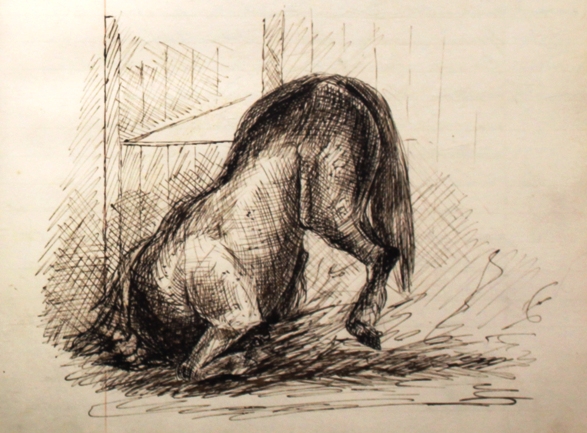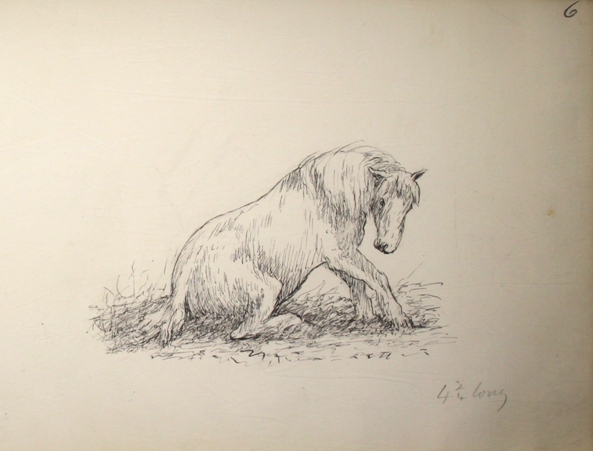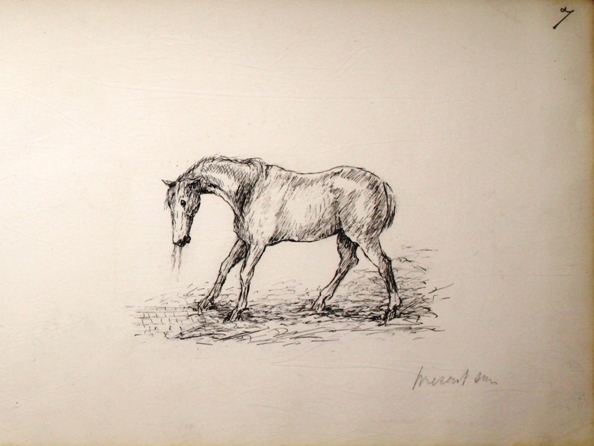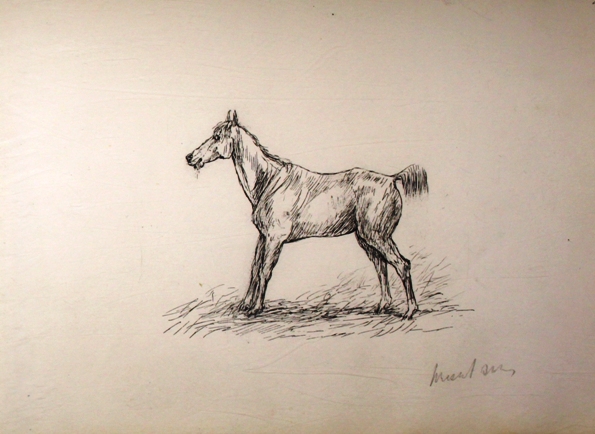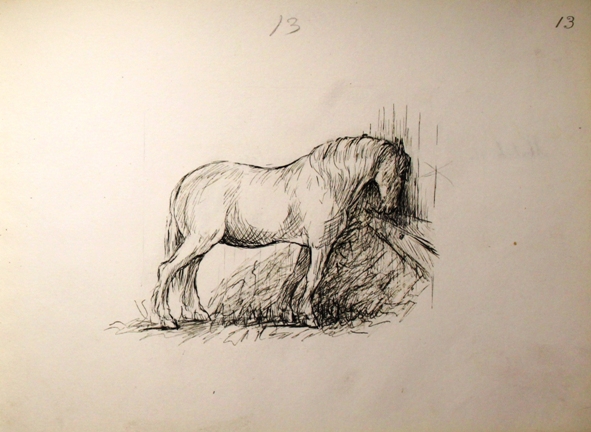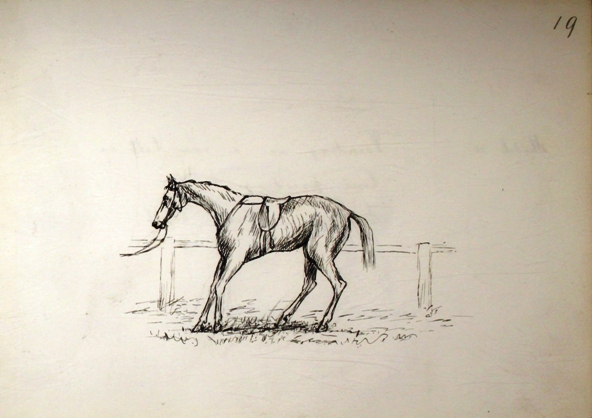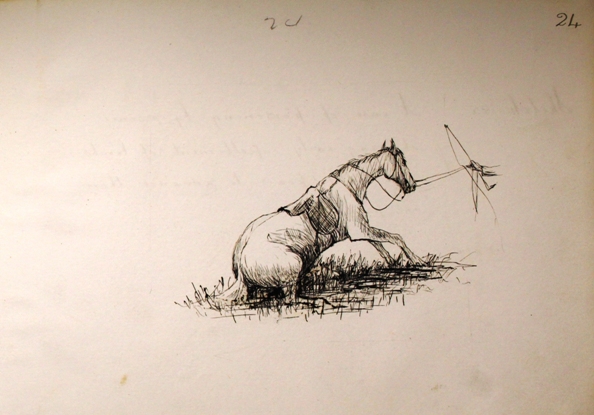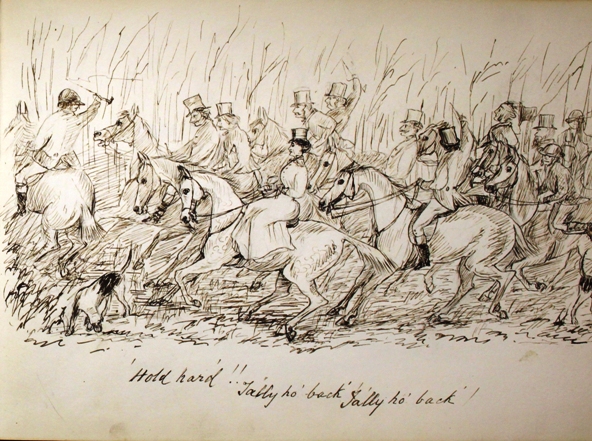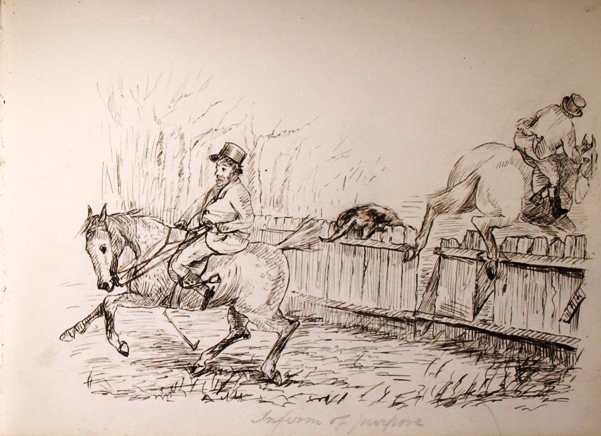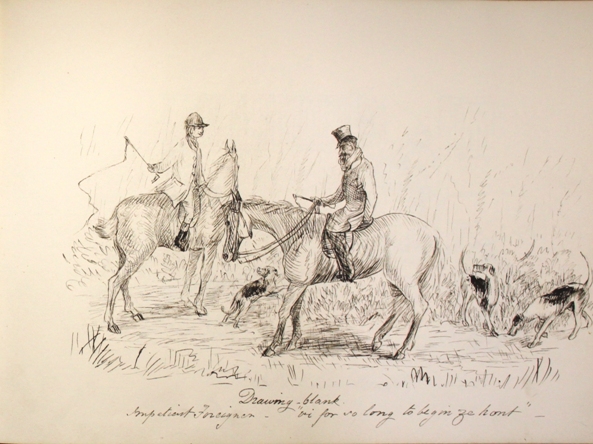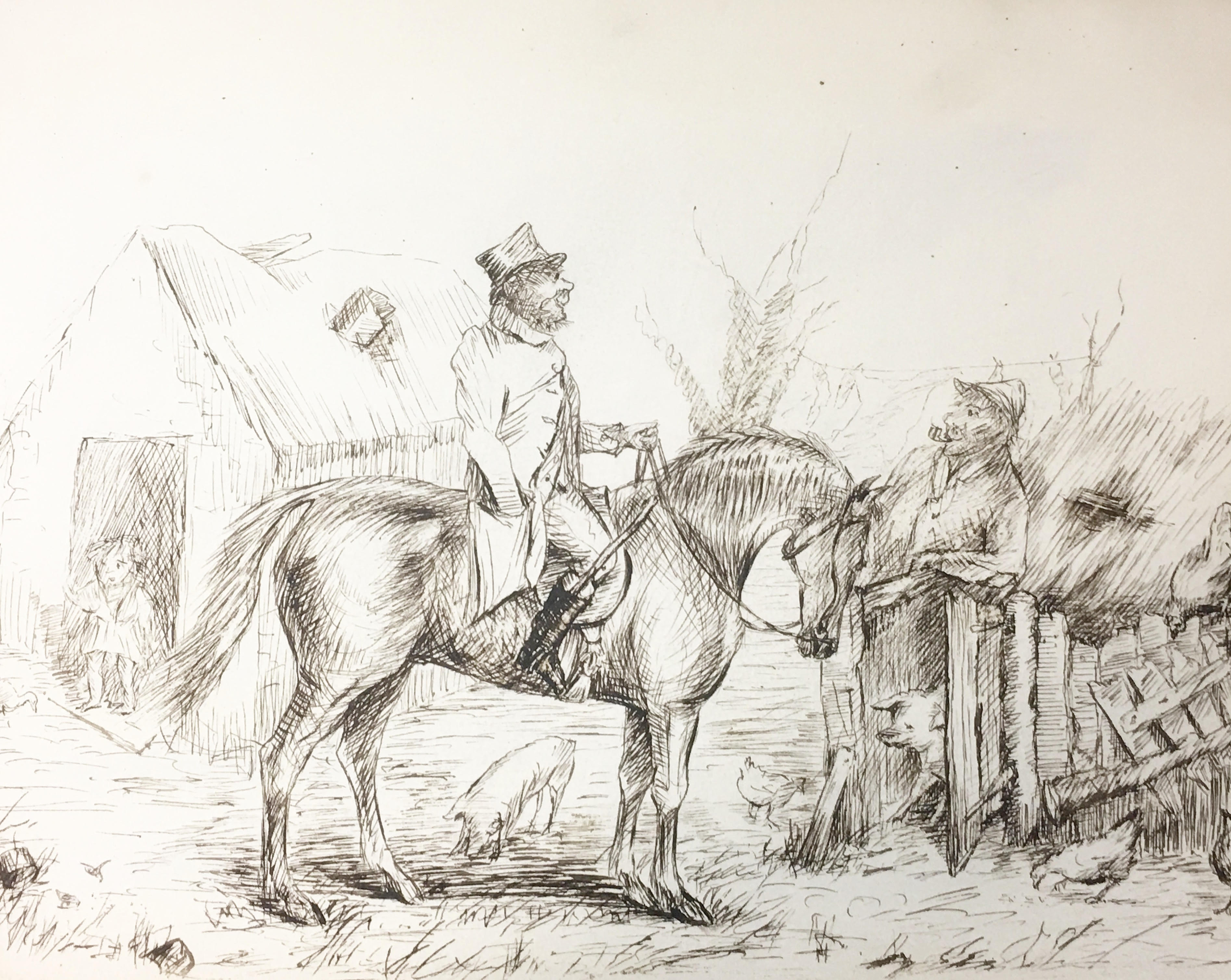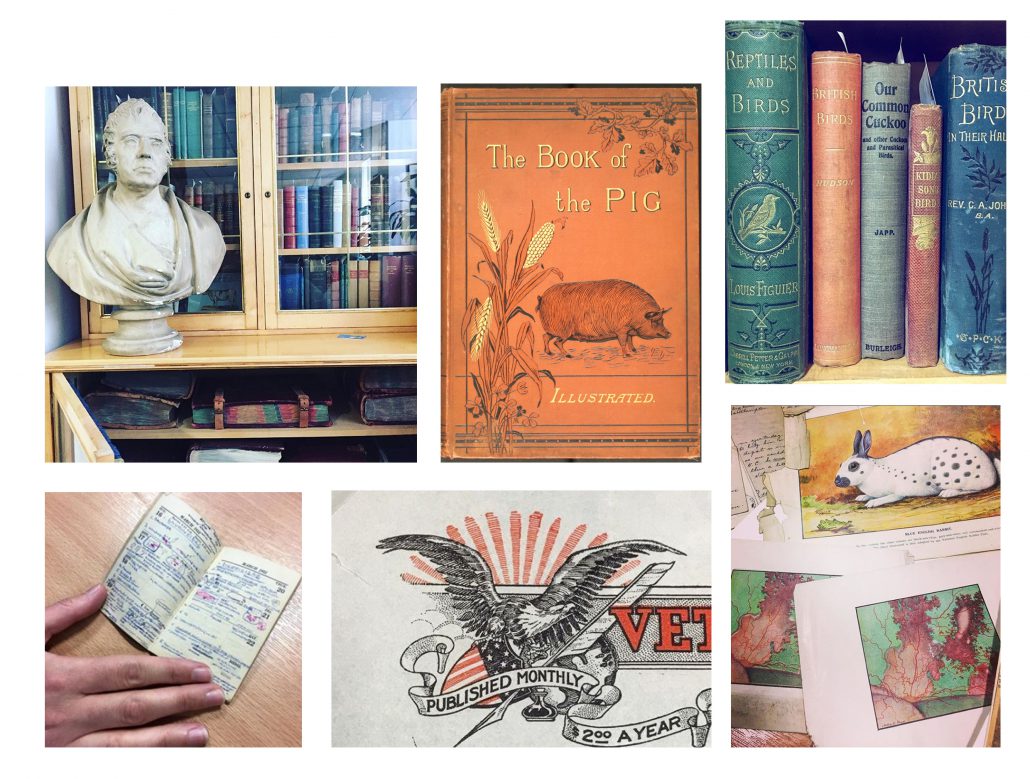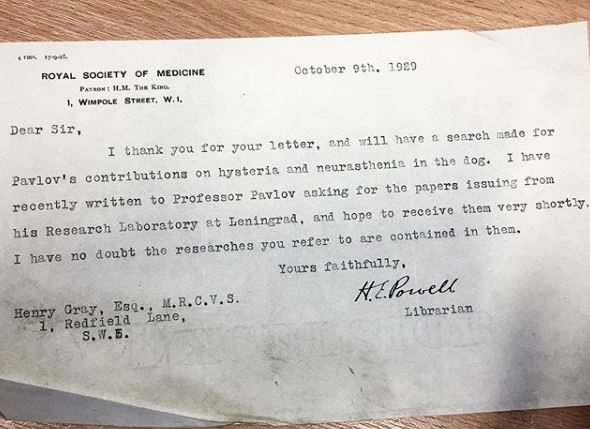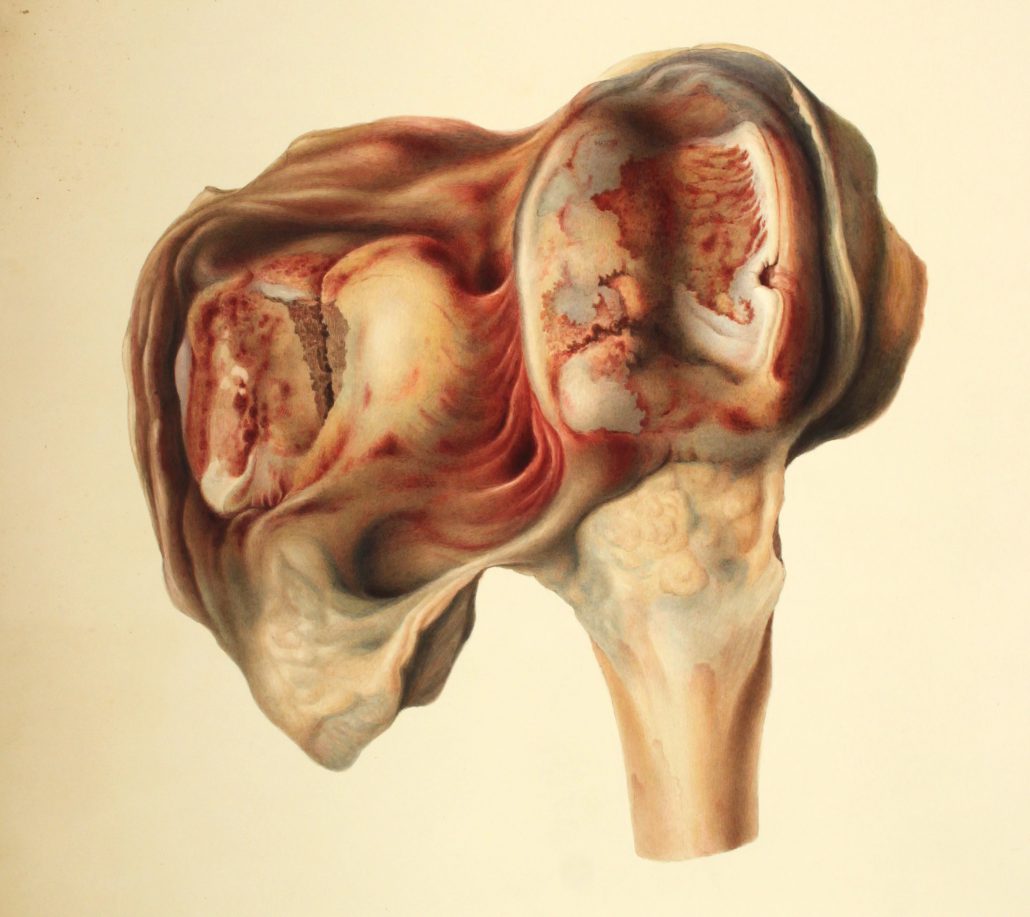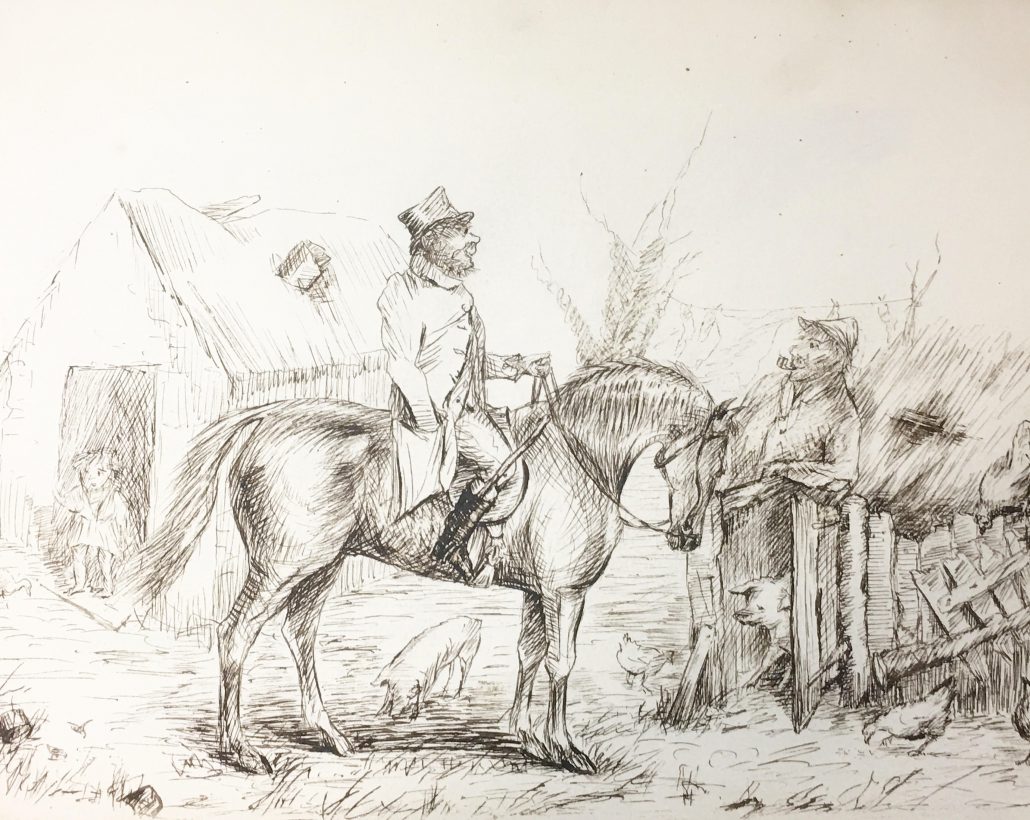John Roalfe Cox – ‘a clever pen-and-ink draughtsman’
I have previously blogged about the almost 400 illustrations by Edward Mayhew that we have in our archives. We also have a number of other smaller collections of illustrations, one of which is the illustrated notebooks belonging to John Roalfe Cox.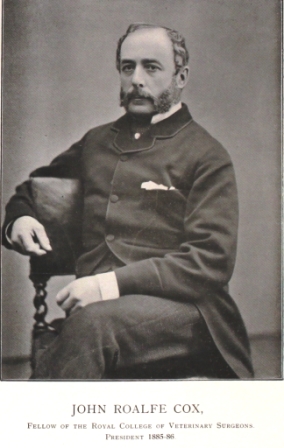
John Roalfe Cox MRCS FRCVS (?-1903) graduated from London Veterinary School in 1849 after which he studied human medicine becoming a member of the Royal College of Surgeons. Eventually he set up a veterinary practice near Grosvenor Square which rapidly expanded until, by 1870, it was one of the largest, and most lucrative in London.
Cox was elected as a Vice-President of the RCVS in 1872 and remained on Council until 1887, serving as President from 1885-6.
His obituary (Veterinary Record 16 (785) pp53-54 records that:
“For many years [he] kept note-books in which he entered very fully the history and treatment of all his most interesting cases … He was a clever pen-and-ink draughtsman, with a neat turn for caricature.”
We are fortunate to have four books which show Cox’s artistic skill in our collection. One case-book and three notebooks containing sketches
The case-book labelled ‘Horses in accident and disease – notes on special cases’ gives detailed accounts of a number of these special cases including a case of ‘coup–de-soleil’ which Cox encountered in the ‘exceedingly hot summer of July 1858’.
He reports his attempts to soothe the horse through the application of cold compresses, at first these appeared to be beneficial but the horse got worse ‘frequently pitching forward’ and ’falling over again as soon as he got on his legs’. Cox ends his account thus:
“I felt no doubt of it being a case of sun-stroke…he had to be destroyed the following day.”
The notes are accompanied by the following illustration.
Two of the notebooks contain sketches of cases with brief descriptions – interestingly one of these books labelled ‘Clinical sketches of horses in accident and disease’ appears to be the manuscript original for his only published work of the same title
Sketches include:
The fourth notebook contains some of Cox’s caricatures which show a variety of rural scenes with captions which reveal his sense of humour.

